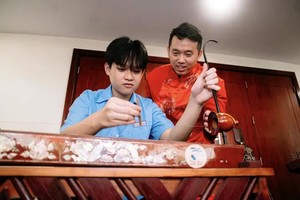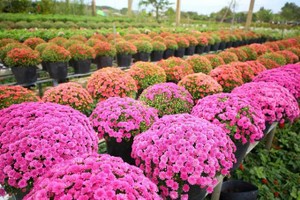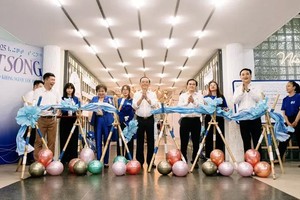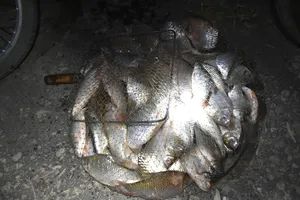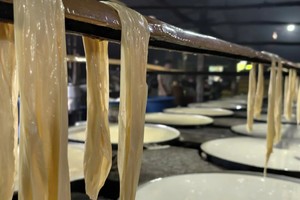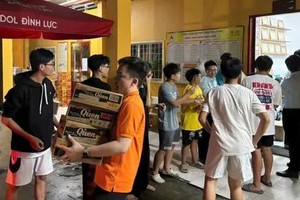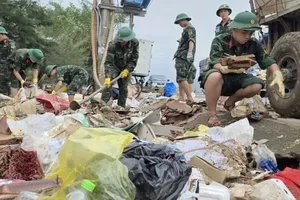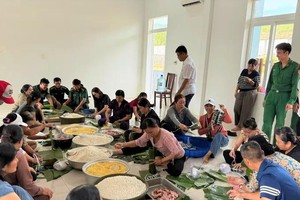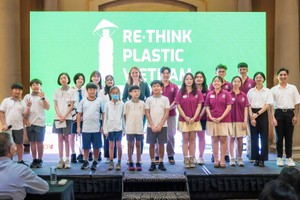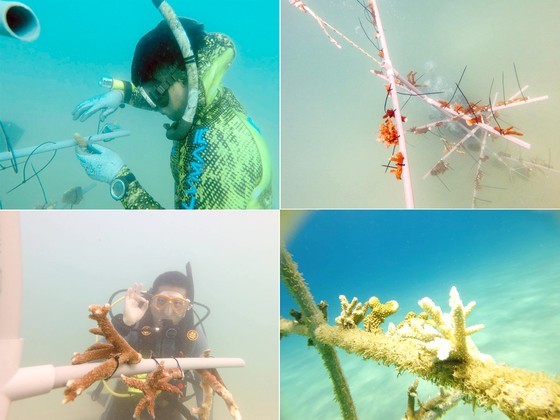 Coral branches are cultured on rigs and closely monitored for growth (Photo: PADI Vietnam)
Coral branches are cultured on rigs and closely monitored for growth (Photo: PADI Vietnam)
Leader of the PADI Vietnam diving team Nguyen Ha Minh Tri said being an international diving instructor with more than 23 years of experience in the diving industry, he has witnessed the transformation of coral reefs over time in all the waters of Vietnam. In recent years, coral reefs everywhere have gradually died due to climate change, environmental pollution, and human destruction, gradually the area for coral has been significantly narrowed.
According to Mr. Tri, if this situation continues, soon humans will no longer see beautiful coral reefs. Therefore, he and his fellow students and partners came up with ideas for growing coral. They will carry out the coral culture programs in the places they were going.
Currently, the group includes several dozen members from localities such as Hanoi, Da Nang, Ho Chi Minh City, An Giang, Kien Giang, Lao Cai, Hai Phong who have professional diving licenses. Last mid-May, the group should have organized a three-day tour combining tourism and recreating marine corals in Vinh Hy Bay in Nha Trang City. However, this activity has now been moved to July due to bad weather and equipment not arriving in time.
The coral culture work has been researched and tested by Mr. Minh Tri's group, starting from a few small branches in Nha Trang waters by the method of gluing coral directly onto the rock and dead coral block with the cement and binder. He announced that after nearly 4 months, these coral branches are growing very well and are healthy.
In addition, the group also planted 2 coral rigs on pylons according to the nursery model in Ninh Thuan waters for two months and the results are also positive as 90 percent of the corals incubated here have sprouted and are growing very well while about 10 percent are covered with moss, so they are a bit weak due to lack of light.
After culturing, the team regularly observes and monitors the growth of the coral branches and is happy to see them healthy, sprouting, coloring and especially small fish.
“We are not discouraged and we don’t give up because before implementing the program, all participants determined that growing coral is not like growing trees. We surely have to wait 5-10 years or maybe a few decades to see. Therefore, we have named the trip ‘Planting a branch of coral - giving it to future generations', said Mr. Tri.
 Coral branches are cultured on rigs and closely monitored for growth (Photo: PADI Vietnam)
Coral branches are cultured on rigs and closely monitored for growth (Photo: PADI Vietnam)
He said this activity can only be done with the consent of the local government and the support of the people living there. Fortunately, from the very beginning, the group has always received encouragement from locals and they considered it a source of motivation to continue making the program.
In particular, the group's activities are completely non-profit. To maintain the budget, the members together buy materials and machinery. Even though some units offered to sponsor the program, the group did not accept it because the funding was not much.
Mr. Minh Tri shared that the group’s message is that people should take part in the preservation and protection of coral reefs because coral reefs help us protect the coast, avoid big waves, and are the habitat and development of aquatic animals. If the coral reef disappears, it also means that we will no longer have fish, shrimp, snails, and other aquatic and seafood species, and the tourism industry will also be severely affected.
The PADI diving team's coral culture is just the beginning and the journey ahead is very long. Mr. Minh Tri said, in order to replicate this model, after 6 months of studying and monitoring the growth of planted coral branches, if more than 70 percent of coral reefs are alive and well developed, the group will announce how to plant coral reefs on social networking sites and instruct people to join hands to regenerate coral reefs across the country.
The more people involved in this work, the more opportunities for coral reefs to recover, said Minh Tri.


